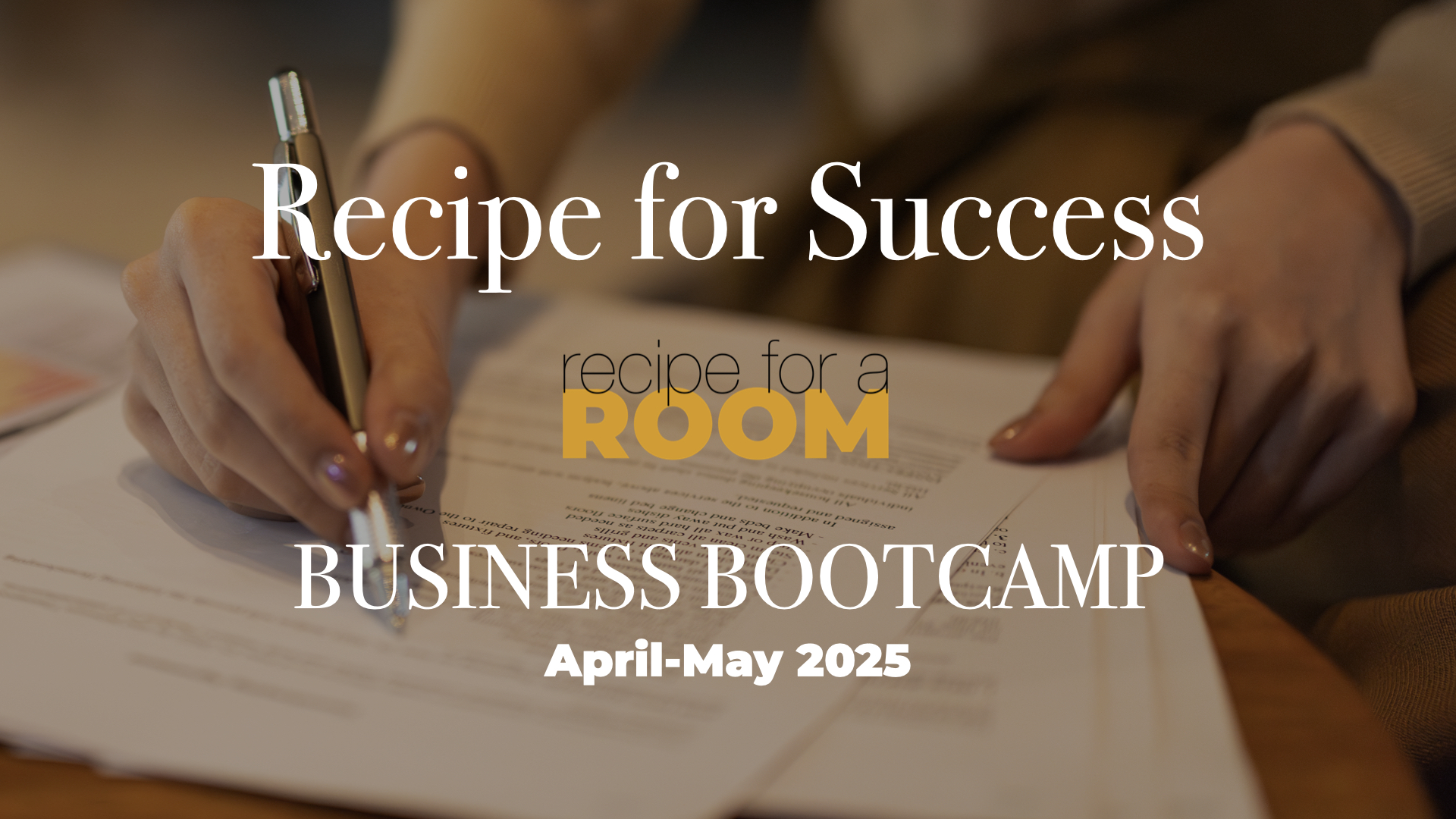
10 Frustrations Holding Your Interior Design Business Back (and How to Fix Them)
Mar 30, 2025Have you ever felt like you’re doing all the right things: working long hours, tackling project after project, putting yourself out there...and yet somehow, you're being held back? Your business feels stuck, progress is frustratingly slow, and you can’t shake the sense that something fundamental is wrong. You’ve put your heart and soul into making it work, but the results don’t reflect your effort.
You’re not alone. Many designers find themselves in this exact position, spinning their wheels without gaining real traction.
In fact, there are ten common frustrations that crop up repeatedly when I talk to the designers who join my Bootcamp masterclass. From inconsistent income to overwhelming burnout, and marketing that feels like shouting into the void, these struggles are surprisingly universal.
The good news? Recognising the problem is the first step to breaking free.
In this blogpost we'll dig into the most frequent challenges designers face and uncover why these symptoms persist; because understanding the root cause is the key to transforming your business.
PART ONE - THE SYMPTOMS
Here are the top ten reasons designers cite when joining my Bootcamp programme - the most common frustrations that interior designers face in their businesses:
1. Struggling to Find Leads or Attract New Clients - Projects feel few and far between, the pool of prospective clients feels tiny, and you’re hoping that word-of-mouth or existing clients will keep things going.
2. Attracting Low-Budget, Low-Value Clients - All your enquiries come from clients who have little to no budget or expect the world for next to nothing.
3. Inconsistent Income or Cash Flow Issues - Some months are flush with projects and payments, while others are worryingly dry, or worse.
4. Feeling Overwhelmed and Burnt Out - You’re constantly chasing deadlines, firefighting problems, and feel like you can never switch off. You know you used to love this job, but have lost touch with why.
5. Projects Running Out of Control or Going Off-Scope - Clients change their minds repeatedly, budgets spiral, and timelines stretch out without extra pay. You’re pulled in ten different directions and feel taken advantage of.
6. Not Charging Enough (or Feeling Awkward About Pricing) - You feel undervalued, or hesitant to ask for higher fees, leading to resentment or financial strain.
7. Marketing Feels Draining and Ineffective - Posting on social media feels like shouting into the void, you’re sprinting just to stay in one place, and can’t see how to turn engagement into leads.
8. No Clear Vision or Direction for the Business - Each day you start from scratch. You aren’t confident making decisions for your business because the distinct personality of your business isn’t clear - even to you - you don’t know your priorities, and you don’t have a step-by-step roadmap to business growth, and future success.
9. Imposter Syndrome and Lack of Confidence - You worry you aren’t good enough, or that it’s only a matter of time until clients and peers “find you out.”
10. Difficulty Maintaining Client Relationships Over Time - At some point along the way you drop the ball, and the clients you’ve mostly served well don’t come back for repeat projects or recommend you to others.
If you’re facing one or more of these frustrations, it’s time to get brutally honest:
What’s really holding your business back?
PART TWO - The Diagnosis - Tracing the Symptoms Back to Their Root Cause
Unless you chase these uncomfortable symptoms back to their root cause, you’ll stay stuck in this endless, frustrating spiral. Every day that you don’t act, you waste valuable energy pushing your dysfunctional business uphill.
Instead, reflect on the problem and analyse the fundamental reasons why your actual business and your dream business aren’t aligning.
You need to look below the surface.
REFLECT ON YOUR FRUSTRATION
1. Write down your most persistent frustration.
Get specific: What are the practical consequences of this problem? (E.g., lack of leads means unreliable revenue. Panic about the situation burns up time, and panic results in scattergun and inconsistent marketing…)
2. Ask “Why” Repeatedly:
Why do I lack leads? → My marketing isn’t reaching the right people.
Why isn’t it reaching them? → I’m not targeting the right audience or not promoting consistently.
Why aren’t I targeting the right audience? → I’m not really sure who they are.
Why don’t I know who to target? → I haven't invested time in writing a thoughtful business or marketing plan.
3. Look for Patterns:
Is this problem recurring? Does it crop up repeatedly despite your efforts to solve it?
MY BUSINESS AS A CASE STUDY:
The biggest issue in my business was sluggish sales. Why? Because I was marketing to one small pool of clients, and the pool wasn’t growing.
When I dug deeper, I realised that the problem wasn’t that people didn’t like what I was offering - they didn’t even know I existed.
When I reflected on my frustration, I realised that the key to change I needed to make would be growing the pool of prospective clients.
PART THREE - The Overarching Goal - Setting a Target That Demands Action
The way out of a frustrating spiral - metaphorically - is to set a point on the horizon and chart a course towards it, or - in real terms - set the overarching goal that will completely resolve your problem, AND figure out how to get there.
Starting with the goal, it needs to be specific: the way that you frame the goal needs to help you set out towards it. Vague goals like ‘grow my mailing list’ or ‘get more clients’ don’t cut it, they don’t motivate you to crack on. You need a bold, specific target that makes you take strategic, consistent action.

Guide on Setting a Transformational Goal:
- Make It Measurable: Set a number that would be undeniably successful, AND set the date by which you’ll achieve this.
- Make It Public: Create accountability by sharing your intentions.
- Make It Strategic: Break down the goal into smaller, manageable targets.
MY BUSINESS AS A CASE STUDY:
For 2025, I've set myself the challenge of growing my mailing list to 1,000 relevant contacts. This isn’t just about the number, it's about proving that consistent, targeted action will drive the outcomes I want. I know I need a structured plan and accountability to make it happen.
A note on picking the number. I've gone with a ‘stretch goal’. The historical growth of my mailing list was so pitiful that getting to 200 names would represent unimaginable success - relatively speaking. So, 1,000 names is a stretch goal - an ambitious target set beyond my current capabilities or performance level. I've chosen a number that will push me out of my comfort zone and inspire exceptional effort and innovation. This is challenging me to think bigger, act more strategically, and stay consistent over time.
Unlike regular goals, which are meant to be realistic and achievable with existing resources, stretch goals often feel slightly uncomfortable or improbable, but still possible with determination, creativity, and focus.
NOTE: With my stretch goal, I plan to be compassionate, I will treat myself kindly if I don’t quite get there; I will congratulate myself for giving it everything and having a go. I know that just by trying things will improve.
PART FOUR - Strategy - Building Your Roadmap to Success
It’s easy to feel motivated at the start, but how do you maintain that energy week after week?
An effective strategy has four key elements:
- Intentional Planning: Break down your big goal into monthly and weekly actions.
- Consistent Tracking: Measure your progress regularly - don’t wait until it’s too late to pivot.
- Accountability: Share your intentions publicly and commit to regular updates.
- Support Network: Surround yourself with people who are also pursuing big goals and hold each other accountable.
MY BUSINESS AS A CASE STUDY:
As we approach the end of Q1 2025, I am about to complete the 13th weekly report on the growth of my business - the progress I've made each week towards my target. I have specific goals for each month - actions I'll take that month, chosen because I'm thoughtfully planning the specific steps I believe will deliver my target.
I started writing a weekly newsletter this year, and each week I report my progress to my readers - I hold myself publicly accountable.
And I meet monthly with my Bootcamp graduates to collaborate on strategy and celebrate all of our wins - we are a group of ambitious entrepreneurs, all determined to grow the success of our businesses and help others along the way..
PART FIVE - The Takeaway - Why You Need To Start Now.
Don’t wait for the perfect moment to fix what’s holding your business back. Pressing on with a serious problem in your business only delays the moment when it will really start performing
Set a bold goal that forces you to address your biggest challenge. Really commit to it: make it public, get strategic, stay consistent - and you’ll see your business shift.
If you’re ready to be that designer, to take that step, Bootcamp is here to support you. Work it all out in private with me, and join a community of designers who are not just talking about business growth but actually doing it, and doing it together.
Bootcamp is not about perfection, it’s about accountability and making steady, real-world progress, and Bootcamp 2025 is just about to launch! Here's some more information - see you in there!

Stay connected with news and updates!
Join our mailing list to receive the latest news and updates from our team.
Don't worry, your information will not be shared.
We hate SPAM. We will never sell your information, for any reason.

